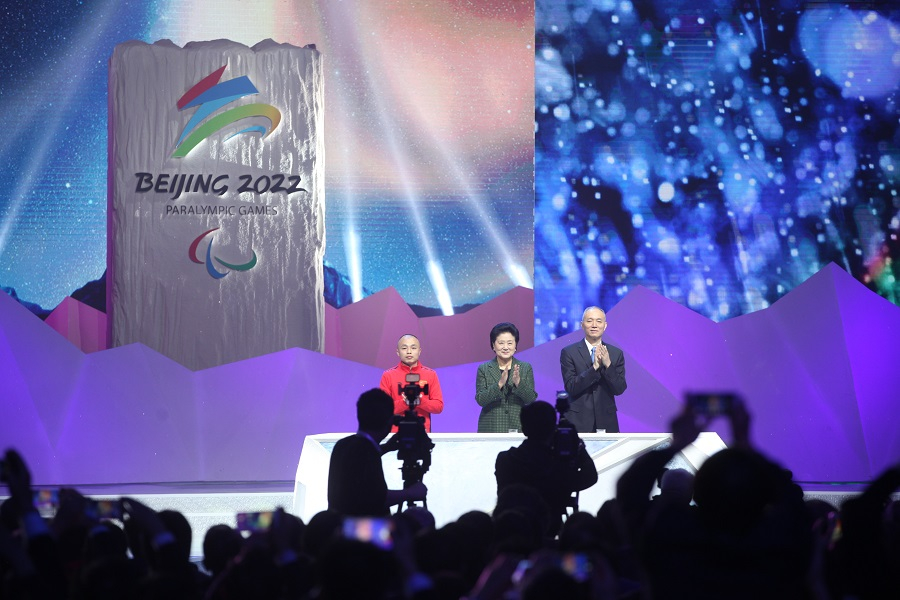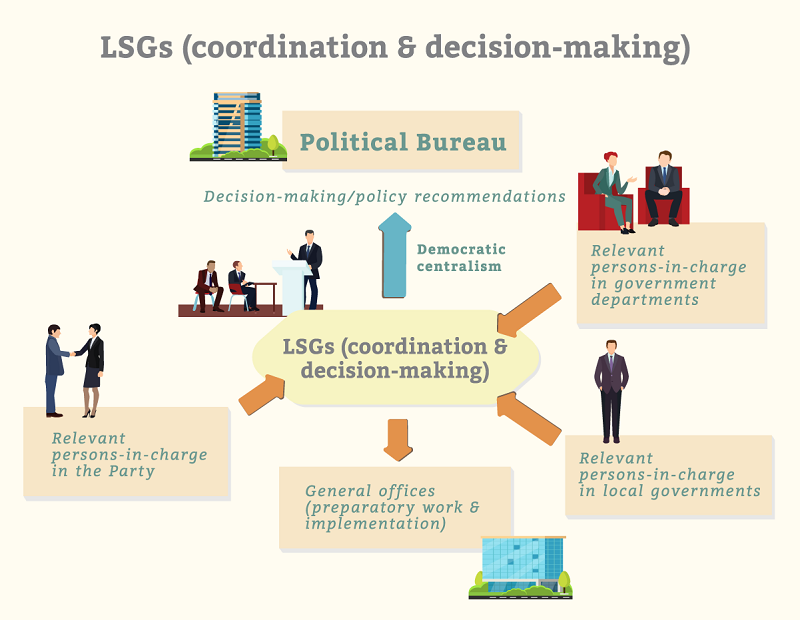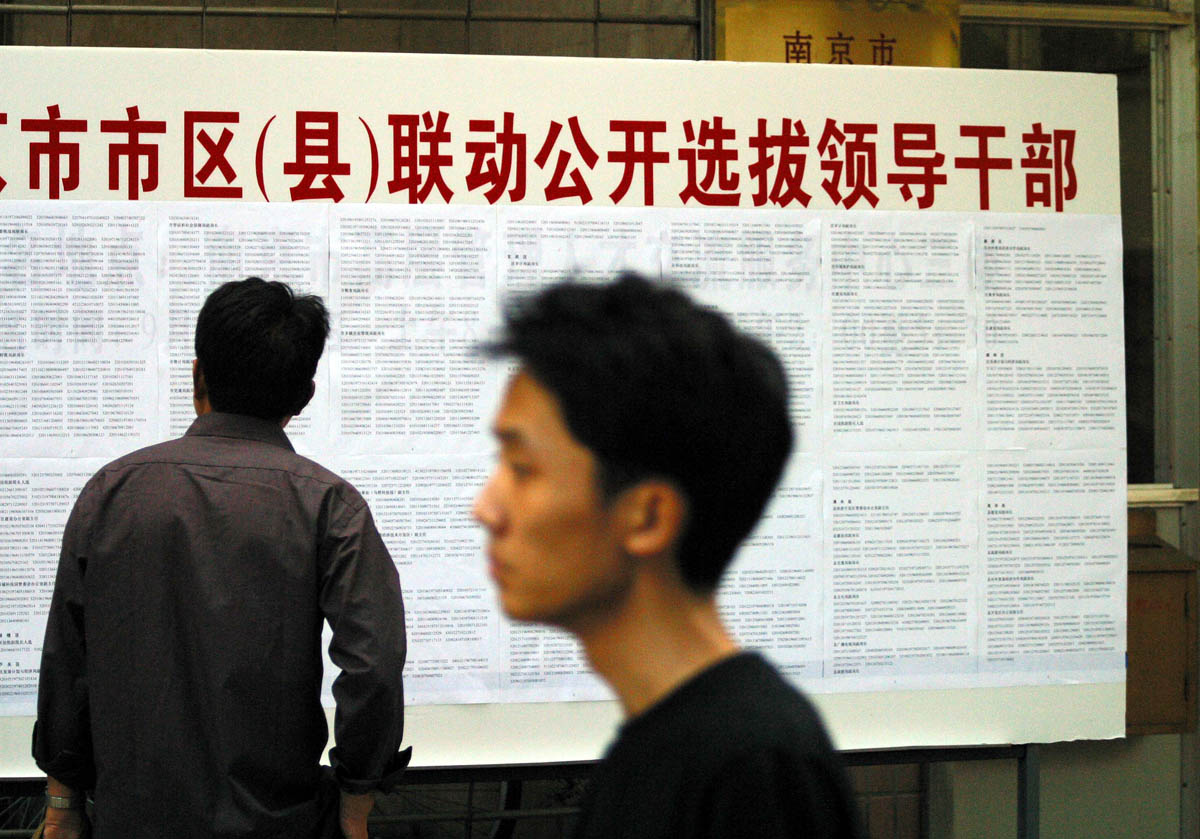China has established groups galore - the Leading Group for the Development of the Guangdong-Hong Kong-Macao Greater Bay Area, the Central Leading Group for Financial and Economic Affairs, the Central Foreign Affairs Leading Group, the Leading Group of Poverty Alleviation and Development ... These and numerous other groups crop up in the news from time to time, but what exactly are they? What are their actual roles in national governance? How are tasks divided among this impressive assortment of groups, and what do they have in common?
On August 15, 2018, Carrie Lam (林鄭月娥), chief executive of Hong Kong, took up an additional post - that of member of the Leading Group for the Development of the Guangdong-Hong Kong-Macao Greater Bay Area (粵港澳大灣區建設領導小組). Fellow members include Fernando Chui (崔世安), chief executive of Macau, He Lifeng (何立峰) minister of the National Development and Reform Commission (國家發改委) and Zhang Xiaoming (張曉明) director of the Hong Kong and Macau Affairs Office (港澳辦). The group is headed by Han Zheng (韓正), a vice-premier of the State Council (國務院).
The Leading Group for the Development of the Guangdong-Hong Kong-Macao Greater Bay Area is not the only frequently-featured group in the news. Numerous other groups such as the Central Leading Group for Financial and Economic Affairs (中央財經領導小組), the Central Foreign Affairs Leading Group (中央外事工作領導小組), the Central Anti-Corruption Coordination Group (中央反腐敗協調小組) and the Leading Group of Poverty Alleviation and Development (扶貧開發領導小組) also have their share of media attention. Some groups were re-named commissions in March 2018. These include the Central Leading Group for Financial and Economic Affairs, the Central Foreign Affairs Leading Group, the Central Leading Group for Comprehensively Deepening Reforms (中央全面深化改革領導小組) and the Central Cybersecurity and Informatization Leading Group (中央網絡安全和信息化領導小組).
These leading groups (literally translated as “leading small groups” will be referred to as LSGs henceforth) draw their members mainly from relevant central departments, committees and local governments, and are usually headed by a Political Bureau member of the CPC Central Committee. President Xi Jinping (習近平), general secretary of the Communist Party of China (CPC) for instance, heads numerous LSGs. Obviously, these leading groups play a pivotal role in the country’s political system and governance. Yet what kind of organizations are they? What are their actual roles? How are tasks divided among this vast array of groups? What do they have in common?
Zeng Peiyan (曾培炎), former Vice-Premier of China’s State Council, described the LSGs as follows: “Time and time again the practice of setting up these inter-departmental leading groups to implement key strategic missions developed gradually over time has proven to be an effective way for the Party and the government to implement long-term plans.”
The type of governance in which LSGs call the shots on national policies is often referred to as “governance by small groups” (xiaozu zhili, 小組治理) or “small group politics” (xiaozu zhengzhi, 小組政治). According to Professor Wu Xiaolin (吳曉林) of the Zhou Enlai School of Government of Nankai University (南開大學周恩來政府管理學院), “small group politics” was developed within the party-government system as a way to address issues that require serious attention or a solution. Under the leadership of a figure or department from the upper echelons of power, LSGs are formed to bring numerous departments together, consolidate political resources and coordinate and lead efforts to undertake inter-departmental, inter-system or inter-regional political activities. The Leading Group for the Development of the Guangdong-Hong Kong-Macao Greater Bay Area, for instance, was formed by the State Council to facilitate discussion and coordinate actions towards the development and joint management of a Guangdong-Hong Kong-Macao Greater Bay Area (粵港澳大灣區).
LSGs are by no means a recent development: the "three-person group” (三人軍事領導小組) was a leadership team in the time of the Long March (1934-35). They formed the basis for the current practice of having major decisions made by small leading groups. The Central Study Group (中央學習研究組) and the Foreign Affairs Group (外事組), both predecessors of current day leading groups, were established in 1941 and 1944 respectively. This was followed by the establishment of the Central Leading Group for Taiwan Affairs (中央對台工作領導小組, 1954) the Central Group of Political Science and Law (中央政法小組, 1956) and the Central Foreign Affairs Small Group (中央外事小組, 1958). In short, China has a long history of governance by small groups.
On June 10, 1958, the CPC Central Committee issued a Notice Concerning the Establishment of Small Groups for Finance, Politics and Law, Foreign Affairs, Science and Cultural Education (關於成立財經、政法、外事、科學、文教小組的通知) along with a broad definition of the role of such groups. Zhou Wang (周望), an academic at the Zhou Enlai School of Government at Nankai University, considered this official declaration from the high-ranking Central Committee level marked the LSGs’ entry onto the political stage.
From then on, LSGs became a fixture in the Chinese political scene, playing a pivotal role in national governance. They drive the modernization process in a way that sets China’s development experience apart from other countries.
LSGs may be classified according to whether they are created on a permanent or temporary basis. Permanent LSGs mainly deal with broad issues of fundamental, long-term and strategic importance. Examples of such LSGs are the Central Leading Group for Comprehensively Deepening Reform and the Central Foreign Affairs Leading Group. Another example is the Central Leading Group for Financial and Economic Affairs. Despite having been abolished and re-established several times since its establishment in 1958, the group’s mission to promote national economic development, a task of fundamental and strategic importance, has remained the same.
In contrast, temporary LSGs are established to handle temporary and unforeseen tasks that have far-reaching impacts. Such task-oriented groups normally disband once their appointed tasks have been completed. Examples include a leading group set up after the Wenchuan Earthquake to supervise the receipt and use of quake rescue and relief funds and goods; and the Leading Group for Olympics and Paralympics (北京奧委會和殘奧會領導小組).
LSGs can also be categorized by their lateral span of influence into LSGs within the administrative system and LSGs that link primarily to the Political Bureau. Examples of the former are the State Council’s advisory and coordinating organs such as the National Anti-Terrorism Leading Group (國家反恐怖工作領導小組) the Leading Group for Western Region Development (國務院西部地區開發領導小組) the National Leading Group for Informatization (國家信息化領導小組) and the Leading Group for the Development of the Guangdong-Hong Kong-Macao Greater Bay Area. The State Council Leading Group of Poverty Alleviation and Development has been operating for more than 30 years since its establishment in 1986.
Among various LSGs, those that report directly to the Political Bureau, also referred to as Central Committee leading groups, are the most influential and representative. Examples are the Central Leading Group for Taiwan Affairs and the Central Leading Group for Financial and Economic Affairs. These LSGs gather relevant persons-in-charge from the Party and the government under a party-government joint conference system, a mechanism that serves as a key interface between the two entities within China’s party-government relationship. Professor Shao Zonghai (邵宗海), former head of the Chinese Culture University College of Social Sciences (中國文化大學), observed that Central Committee LSGs are like mechanisms for “party-government coordination” or “party-government cooperation.”
The scholar Zhou Wang (周望) has summarized three major characteristics of Central Committee LSGs:
1. Intermittent operation
Being task-oriented, the operating schedules of these LSGs depend on the availability and duration of relevant tasks. For most of the time, they are in “standby” mode, though annual high-level CPC meetings offer relatively public signs of these LSGs in action.
2. Double-tier structure
Taking their intermittent operations into account, LSGs have adopted a double-tier structure. One tier is the leading group itself and the second tier is the general office. Its members, engaged in an unpaid capacity, are drawn from relevant government departments, where they undertake various official duties and only gather to work on the LSG’s task when needed. Any preparatory or follow-up work is delegated to the LSG’s general office, which is usually attached to an official government department. For instance, the Office of the Central Leading Group for Cryptography Work (中央密碼工作領導小組辦公室) is set up under the State Cryptography Administration (國家密碼管理局). Some are even “one institution bearing two names,” such as the Office of the Central Leading Group for Taiwan Affairs and the Taiwan Affairs Office (台灣事務辦公室) of the State Council.
3. Obscure yet institutionalized
Central Committee LSGs are not listed under any official party or government organizations or institutions. They have no physical, publicly disclosed office address, nor do they advertise their presence by hanging out name plaques. Only a handful of reports on their relevant tasks, which sometimes mention the LSGs in passing, contain any traces of their existence. This mode of operation has lent LSGs a somewhat mysterious air. However, this does not mean they are free to do as they please! Customary practices and working modes have developed into the LSGs’ routine operations over time. Long-running LSGs have developed some unwritten norms that are showing signs of institutionalization. Their level, their composition and operational modes all follow certain unofficial yet recognized rules.
So what, exactly, is the role of Central Committee leading groups?
There’s no official word on the functions or roles of these LSGs. So far, the only publicly-available and authoritative definition is from a statement made in July 1999 by Hu Jintao (胡錦濤) then a Standing Committee member of the Political Bureau, that LSGs play the role of adviser and aide in the process of policy formulation, decision making and implementation guidance. They also serve as a central nerve centre that helps relay information on all issues between the lower and higher levels of government.
Major decisions are made by the Standing Committee of the Political Bureau, the highest and most powerful decision-making body in the CPC, then passed on to the State Council for implementation. LSGs play a key role in the process by helping to evaluate and analyze the proposed policies before their approval. An LSG brings actual decision makers, both from the party and government, to one table. Following the principles of democratic centralism, members fully discuss the proposed policies before coming to a collective decision and submitting their views to the Politiburo Standing Committee for deliberation. This is why Shao Zonghai called LSGs “party-led decision-making and coordinating mechanisms with Chinese characteristics.”
The crucial part is to reconcile the Party's objectives with the government's actual practice: by ironing out differences on policy issues among relevant persons-in-charge from the Party and departments prior to submitting their views to the Political Bureau. They are able to come up with concrete plans for the decision-makers' reference and reduce resistance to the implementation of the new measure. By facilitating two-way communication - top-down as well as bottom-up - and enlisting collaboration among relevant parties, LSGs bridge the level of the Party decision-makers and the level of the implementing government institutions, acting as a political nerve centre that has no counterpart in Western countries.
In addition, LSGs help balance the conflicting interests of various departments during the implementation of new measures to ensure that the objectives are successfully fulfilled. Under the divided management of China’s political structure, each department wields limited power and resources. For key strategic projects like the Guangdong-Hong Kong-Macao Greater Bay Area that involve one country, two systems and three free-trade zones, LSGs are indispensable as planners and coordinators.
This is especially the case now that China’s reform has entered a deep-water zone, where tough challenges, like complex vested interests and the fragmented, overlapping and unclear responsibilities of multipleinstitutions, must be addressed head-on. As bodies whose decisions supersede government departments, LSG-directed efforts might be the best way to cut through entrenched interests, centralize resource allocation, and push agendas past bureaucratic road blocks. Moreover, as social development enters a new phase and has to deal with new problems that existing organizations are unable to address, the flexible nature of LSGs offers a way to respond to changes effectively.
Therefore, as a unique mechanism within China’s political organization, LSGs were not created as a mere tactic for consolidating power; rather, they are meant to be mechanisms to address the challenges of China’s domestic situation. As such, they follow a special logic and serve a useful purpose.
With global uncertainty on the rise, the government also faces much uncertainty in the realm of public administration. This is the kind of situation where flexible governance shines. As task-oriented, small, flexible decision-making and coordinating bodies, LSGs can be a useful supporting mechanism to help pave the way for a more flexible government and enable it to manage our vast nation more effectively.
References:
How do Leading Groups Lead? (「領導小組」如何領導?) by Zhou Wang (周望) Theory and Reform (理論與改革) 2015 Issue 1
Study on Small Group Politics: Meaning, Functions and Study Prospects (「小組政治」研究:內涵、功能與研究展望) by Wu Xiaolin (吳曉林) Truth Seeking (求實) 2009 Issue 3
Creating a Constitution in China -- Progress since 1949 (憲法何以中國) by Zhai Zhiyong (翟志勇) The Commercial Press 2017
CLSG: Definition and Status in the CCP (中國中央工作領導小組的組織定位) by Shao Zonghai (邵宗海) Mainland China Studies (大陸研究) 2005 Issue 9
Chinese Governance Model Used by China's Leading Small Groups (中國領導小組裡的中國治理模式) Pan Xutao (潘旭濤) People's Daily Overseas Edition (人民日報海外版) March 28, 2014










